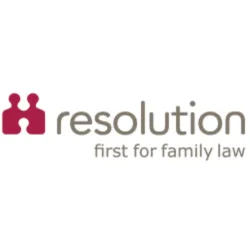
Employment Update – December 2016
In this edition we look at whistleblowing and round up some of the legal happenings towards the end of 2016.
Whistleblowing
Eiger Securities LLP v Korshunova
In this case the claimant alleged that she had been dismissed because she made a protected disclosure.
Ms Korshunova complained to her manager that he had used a “chat” programme, whilst logged in as her, so that others might have been misled into thinking that she was the one talking.
When she was subsequently dismissed for performance issues she alleged that the dismissal was really about the disclosure she had made to her manager.
Not everything that is said by a potential claimant to an employer is a protected disclosure. There must be a public interest element. There must be a “disclosure” in the sense that information is passed from one person to another. A mere “allegation” is not, as a rule, sufficient. The disclosure must concern one of a number of grounds e.g. that there has been a miscarriage of justice or that a legal obligation has been broken.
The claimant said that her statement to her manager amounted to an assertion of a breach of a legal obligation, namely to be transparent with clients (i.e. not to mislead about the identity of the person using the chat programme).
A tribunal agreed but on appeal the Employment Appeal Tribunal has sent the matter back for consideration by a fresh tribunal.
EAT held that this was not a case where it was obvious that a legal obligation existed. The tribunal had not identified the source of that legal obligation. It could have looked, for example, at the rules and regulations to which the industry was subject – but instead it had simply assumed that an obligation existed.
It is right to note that the key question is whether the claimant reasonably believes that an obligation existed and was being broken – so a whistleblowing claim can succeed even if the claimant is wrong about this – but the key word here is “reasonably”. The tribunal should have asked itself, was it reasonable to believe that there was a legal obligation when there was no evidence from any source about how that obligation might have arisen, or from what authority it came.
Another argument that was put to EAT by the employer was that there was in fact no “disclosure” at all. The claimant’s manager knew what had happened and so the claimant’s statement to him complaining about his activity in the chat programme was not conveying any information at all. It was merely an allegation.
EAT rejected that argument. There was some new information given by the claimant to her manager (concerning what view her clients might take about his use of the chat programme).
Thirdly, there was an argument about whether the tribunal had applied the right test in a different respect: the tribunal had asked whether the employer had had the disclosure “in mind” when dismissing. The proper test was whether the disclosure was the “reason or principal reason” for the dismissal.
Whistleblowing cases are often complex and technical and this case demonstrates just how difficult they can be. But they are a valuable weapon in the armoury of those of us representing employees. In particular there is no period of qualifying employment necessary if a claim can be brought within the Whistleblowing regime; and the amount of compensation that can be awarded in whistleblowing cases is unlimited. There are, too, reputational issues at stake in many of these cases – as in discrimination cases, employers are reluctant to be seen to be penalising employees who have blown the whistle in the public interest.
Gender pay gap reporting
The government has published the final draft of the Equality Act 2010 (Gender Pay Gap Information) Regulations 2017.
The regulations come into force on 6th April 2017.
The first reports will be due in April 2018.
The new reporting rules will only apply initially to private and voluntary sector employers with 250 or more employees. The information that needs to be provided relates to various types of pay including bonus pay and employers will be required to publish “median and mean gender pay gap figures”.
Bullying and social exclusion in the workplace
ACAS has just published some interesting notes in relation to “the hidden cost of workplace exclusion”.
The link is here: http://www.acas.org.uk/index.aspx?articleid=5879 and includes a useful link to further ACAS Guidance on bullying and harassment in the workplace.
Christmas parties, violence and employer liability
We have published a new blog dealing with the latest decision on the liability of employers for acts committed by employees during work functions. Visit blog.
Trade Union Act 2016
The government has published draft regulations to define “important public services” (setting out the sectors to which the new “40%” support strike rules will apply).
The government has also published new guidance in relation to picketing and various other aspects of the detail that the new Act anticipated.












